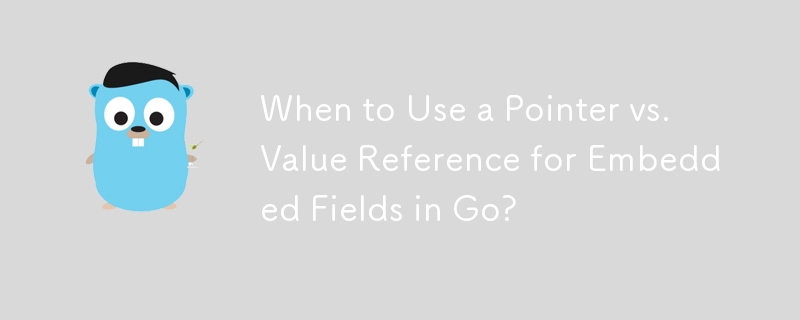

Embedding: When to Employ a Pointer vs. Value Reference
When incorporating one structure within another in Golang, the choice arises between using a pointer or a value reference. Consider the following code snippet:
<code class="go">type Job struct {
Command string
*log.Logger
}</code>In this example, we have embedded the *log.Logger type, represented by a pointer, within the Job structure. Alternatively, we could have utilized a value reference as below:
<code class="go">type Job struct {
Command string
log.Logger
}</code>While both approaches achieve embedding, their implications differ. According to the Go specification, embedded fields support either the type itself or a pointer to a non-interface type. Crucially, the embedded type cannot be a pointer type.
Embedding a pointer, known as "embed by-pointer," offers specific advantages. Firstly, it allows leveraging functions that follow the NewX pattern, where structures are initialized and returned by reference. Secondly, it enables dynamic assignment of different instances to the embedded type at runtime.
For instance, consider the following code:
<code class="go">type Bitmap struct{
data [4][5]bool
}
type Renderer struct{
*Bitmap //Embed by pointer
on uint8
off uint8
}</code>In this example, the Renderer type embeds a Bitmap by reference. This allows a single instance of Bitmap to serve as the embedded instance for several Renderer instances, each with its unique set of characters. The output of this code demonstrates how multiple renderers can operate on the same underlying data structure.
OXXO OXOO OXOO OXOO .@@. .@.. .@.. .@..
In contrast, embedding a value reference does not provide these advantages. However, it does not require the instantiation of an embedded type to access its methods. Ultimately, the decision between using a pointer or a value reference depends on the specific requirements of the application and the behaviors desired for embedded fields.
The above is the detailed content of When to Use a Pointer vs. Value Reference for Embedded Fields in Go?. For more information, please follow other related articles on the PHP Chinese website!




